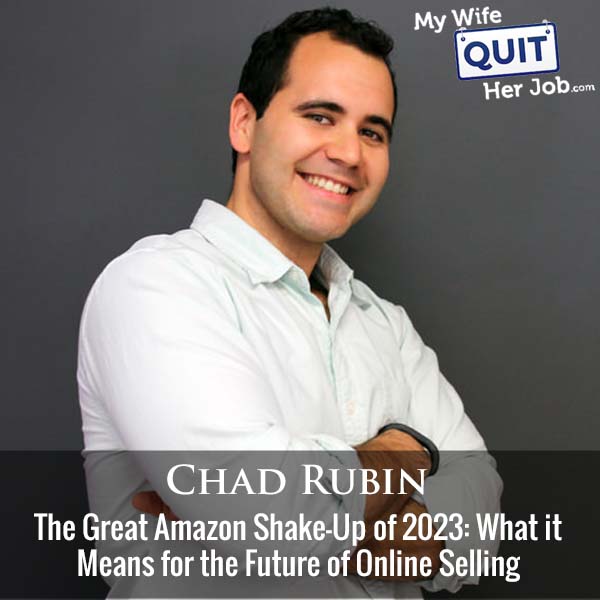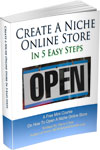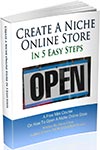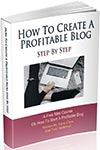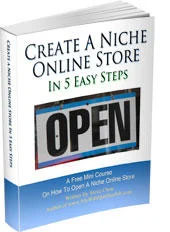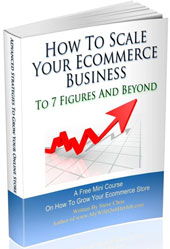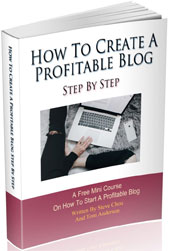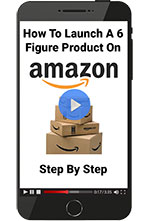Podcast: Download (Duration: 44:00 — 50.6MB)
Today, I have my buddy Chad Rubin back on the show. Last time we heard from him, he was running a $20M company selling vacuum filters over at Crucial Vacuum.
But over the years, the increased Amazon competition caused his shop to become far less profitable. In this episode, we discuss the state of Crucial Vacuum today, the overall Amazon landscape and how he’s been able to turn his company around.
Get My Free Mini Course On How To Start A Successful Ecommerce Store
If you are interested in starting an ecommerce business, I put together a comprehensive package of resources that will help you launch your own online store from complete scratch. Be sure to grab it before you leave!
What You’ll Learn
- What happened to Crucial Vacuum since 2016
- The overall Amazon selling landscape today
- What it takes to be successful on Amazon
Other Resources And Books
Sponsors
Sellerboard – Sellerboard is a must have tool for Amazon sellers if you want to know how much profit you are actually making. Click here and try Sellerboard for FREE.
180 Marketing – 180Marketing is the agency that I used to grow my SEO traffic by 4X in just 6 months! Click here to book an appointment
Transcript
You’re listening to the My Wife Could Her Job podcast, the place where I bring on successful bootstrap business owners and delve deeply into the strategies they use to grow their businesses. Today I have my friend Chad Rubin back on the show and Chad has been in the e-commerce space for over a decade now and in this episode, we’re going to be brutally honest about Amazon and the current e-commerce landscape for 2023. But before we begin, I want to thank Jeff Oxford of 180marketing.com for sponsoring this episode. 180marketing.com is an agency
00:28
that specializes in helping e-commerce stores boost their SEO traffic. And in the past, I used Jeff and his firm managed to grow my search traffic by 4x in just six months. In fact, Marketing is one of the few SEO agencies that I trust 100%. For more information, go to 180marketing.com or just email Jeff at 180marketing.com. I also want to thank Sellerboard for sponsoring this episode. Sellerboard is profit analysis software.
00:54
that helps you figure out exactly how much profit you are making selling on Amazon. And if you’re an Amazon seller, you’re probably aware that there are many hidden fees in selling on the platform, and Sellerboard organizes all that information for you in a clear and concise fashion. And personally, I always recommend Sellerboard because they are among the least expensive solutions that I know of that does this, which is one of the reasons why I like them. For more information, go to mywifecourterjob.com slash sellerboard and try them for free for 30 days.
01:24
It’s literally a no brainer. Once again, that’s mywifequitterjob.com slash S-E-L-L-E-R-B-O-A-R-D. And then finally, I want to mention that the recordings for Seller Summit 2023 are now available for download. This was easily one of the best seller summits that I’ve ever thrown and the quality of content was amazing. If you want to watch the videos, then head on over to sellersummit.com and click on the grab your virtual pass button. And we’ll be taking this link down pretty soon to make room for Seller Summit 2024.
01:53
which will be announced next month. Now on to the show.
02:02
Welcome to the My Wife Could Her Job podcast. Today I have Chad Rubin back on the show after a long time. Last time we heard from him was back in episode 117, which is by my estimate 2016, when he ran a $20 million company selling vacuum filters over at Crucial. Since then, he’s run and sold Scubana, which is software that pretty much manages your entire e-commerce operation. And Chad has a new company called Prophecy as well.
02:33
But what we’re gonna focus on today, as you can tell Chad has lot, his hands in a lot of stuff. We’re gonna talk about the vacuum filter company that we talked about in 2016. It’s had its ups and downs. And we’re gonna talk about how he’s been able to basically turn that company around. And with that, welcome to the show, Chad. How you doing today, I’m excited to be here. Thanks for having me. Yeah, I remember last time we had chatted, and this is a long time ago. So just for the audience, Chad and I recently,
03:01
met up again at Sellin’s Scale, which was Helium 10’s conference in Vegas, and we were at dinner together and caught up. And so it was then I knew I had to have him back on the show. Walk us, catch me up. Last time we talked was 2016. Crucial Vacuum was killing it. It was killing it. 20 million. And I think you had decided to get rid of your warehouse. You moved everything over to 3PL. Everything was pretty hands off and it sounded great. What happened since then?
03:30
Well, since then, I also started dabbling in many other things like Stubana, Prosper Show, and I really wanted to focus on activities that were going to generate the highest ROI for me and my family. So Crucial took a back seat, and I thought that I had the right leadership in place. And really, there were some hubris involved, to be honest. And certainly,
03:55
it didn’t get a lot of love. And so when you don’t give businesses a lot of love and you remove the founder, for me, it had a pretty large impact. So let’s talk about that a little bit. Why did you think that it wasn’t something you wanted to work on and you wanted to start something else? Was it shiny object syndrome or you weren’t that excited about it anymore? Yeah, so if you think about 2016, I would say like SaaS and SaaS valuations in multiples started to increase.
04:25
We’re here on this planet for a short time. So my interest is like, how do I maximize my time here and make the biggest impact, but also an outsized ROI for my family? And so I saw the writing on the wall, really. I felt that there was no fortified mode, especially in the filter space, vacuums, coffee, air. And so for me, was like, OK, what if we built a software that’s multi-channel and we take like
04:50
functionality like a ship station and combine it with like a net suite and we make it modern-day and purpose-built for DSE brands and started building that in 2015 and Crucial took a backseat and it was a cash cow at the time as well, right? Essentially it had SAS margins at that time Which is interesting to think about Let me ask you this instead of just completely outsourcing it Why didn’t you just sell it at that time? The market was pretty good back then too. Yeah
05:17
I actually don’t know if there was a big market to sell. Back in the day, getting people to understand Amazon businesses specifically wasn’t as mature as it is today. There wasn’t brokers that built businesses around it. I do think that there is this art of luck and art of knowing when to hold them and knowing when to fold them and I certainly feel that I least missed that opportunity. I don’t want to say that there’s not going to be another opportunity.
05:46
but at least that was gonna be an outsized opportunity should I have actually sold at that time. Okay. So walk me through what happened to Crucial first before we discuss how you recovered. Yeah. What started happening? What were you seeing? Well, you know, we were one of the first private label brands out there and we were investing in a lot of new products.
06:12
We were also getting copied. was also speaking at the Prosper show and many other conferences about my strategy, about how we were scaling. I everyone saw me perhaps as like a good, easy target. And so everyone started, I don’t want say everybody, but I had a lot of copycats that were copying us and we didn’t innovate. We definitely didn’t innovate our product mix fast enough. I didn’t have the right butts in the right seats at the company for sure. We started scaling into way too many products.
06:42
By the end of the exiting 22, I had 550 private label SKUs with a thousand listings, which is very difficult to manage, right? And to like compete with the best, most optimal listings and to do keyword research. mean, it just, I think it becomes overwhelming really. And so that along with like raw materials increasing, salaries increasing, PPC and the take rates that Amazon was taking.
07:11
uh, increasing right where it’s now surpassed 50 % of revenue, Amazon state rates. So all these things started really compressing, compressing our margin profile. And, um, I tried everything to turn this business around. I hired bankers and I hire, I had people analyzing it and doing diligence and trying to understand what was happening and nobody could figure it out. Uh, I then in, uh, early 22, I let go of
07:41
some people had been in the company for a very long time and hired two more, they failed, had one quietly resign or just disappear. Another one just couldn’t get a point on the board. Anyway, long story short, I ended up taking over the company in October of 22, which is not what I wanted to do because I actually ended up raising capital for Prophecy, 2.3 million, at the end of 21. Back to crucial, since a lot of people probably didn’t listen to that episode 117, were you private labeling these from
08:10
from China? Correct. Was it? Yeah. These vacuum filters. just by nature, there’s like a million vacuums out there, right? So I imagine you had to pick and choose which skews or which models to target and that sort of thing. Yes. Your manufacturers actually listing the same stuff on Amazon too? Not at the time. Not at the time. And you know, I really worked hard to create like a barrier of letting them know where my revenue source was coming from. So like I never let them do FBA prep for me.
08:38
which has been a great source of opportunity now. like the day I didn’t, because I was like, oh, you know what, there’s no moat here. Like anyone from China can come in to the United States and start selling. And sure enough, I mean, now my category is flooded with Chinese sellers. At least probably 75 % of the page is Chinese sellers. And do they have pricing power over you significantly? Significantly, because they’re going factory direct to consumer. Let me ask some other questions. Is there a D to C component?
09:03
There is, we have a Shopify store. We used to be on Magento, so I think when we spoke, I was probably on Magento back then and had really nice organic reach as well. And that was doing at least a million dollars in revenue. And now everyone goes to Amazon to buy commodities. Google is not necessarily the place people go to shop. Yeah, I can see that for vacuum filters, right? It’s kind of like not an exciting product by any means, right? No. So people just want to get the job done.
09:33
They probably don’t even care about the brand so much, do they? I don’t know, I think Amazon people care about reviews, right? Like people are agnostic to brand these days, specifically in commodity driven markets. Reviews and price probably. Yeah. I mean, do your vacuum filters do significantly better than the ones that are coming in factory direct from China? You mean is the performance better?
09:57
Yeah, and do people care is actually what I’m asking. I don’t think people care. Like we have some strong competitors that are doing extremely high volumes and have stolen a lot of like a lot of our share. All right. And how did they steal your share? Was it based on price or were they playing games? Were they doing illegal stuff? Well, there is definitely black hat components in it. I think a lot of those loopholes have been shored up by Amazon, but I think they knew how to launch better. I think they they create better listings. A lot of my listings have been dusty.
10:24
for a very long time and hadn’t been resurrected or revived. they definitely outsmarted us, right? I just had too much going on and I just wasn’t really having my focus on this business. Okay, and then what other things were you losing on? So the listing, which actually is probably a major component, you were still managing your ads and everything, I would imagine? Yeah, yeah. used different PPC agencies, which…
10:51
There’s a headache in itself and went through a lot of those and finally hired somebody internally. So yeah, PPC, was maintaining that internally. We also were like forecasting inventory inappropriately. mean, we got, we also got, by the way, we had a nice boost during COVID. Uh, of course, a terrible backdrop, but there was a shift of spent online from, from, uh, bricks to clicks. And we were at the epicenter of that. And we also had a lot of access inventory. So as people, as all of our competitors sold out their stuff, like we were, we were left.
11:21
with the inventory that was available for sale and we sold a ton of inventory during that time. I think we took our inventory position from like 1.8 million to about $700,000 throughout the pandemic. Just a significant reduction in inventory. Yeah. Right. So you were kicking ass during 2020 and 2021 probably. That along with just an anecdote, I had this shower thought that our vacuum bags, which are HEPA bags,
11:51
actually can serve as KN95 masks. So I made a donation to the hospital. I think the volunteer organization that was cutting was called the Masked Warriors. the masks, I then got some publicity from it. Somebody found out and it was on TV. And then somebody I actually did dinner with in LA at a VIP dinner, an e-commerce dinner, reached out to me from Headley and Bennett, which is a manufacturer in LA.
12:20
and they were making aprons at the time and pivoted into masks and they said, hey, can you become our exclusive manufacturer of filters for the masks? I said, for sure, let’s do this. And that became a massive business in itself that I very lucky with. We had to pivot into masks also. ended up happening with us, we saw the wedding industry and the travel industry, hotels, airlines.
12:46
No one was getting married, no one was traveling. So we were stuck with all this stuff and we just turned them into masks, decorative masks, not like HEPA like yours. But remember there was a time when people were just wearing cloth masks, right? Yeah, for sure. So that’s what we did. Interesting, okay. So that did very well for you during the pandemic. And then when did things start going downhill then? I would say probably May or, well, things have been going downhill. I think that when times are good,
13:16
It obfuscates the bad, right? So it’s hard to find maybe like the points of friction in the business when times are just great. And so essentially the margin profile was so good on those items that it obfuscated a lot of the bad. So I would say like times were already tough at that moment. This just revived things and elevated our profit margin. But I would say 18 months, you, if you act that out, 18 months of negative net margin of losing at least 30 to $40,000 a month. Wow.
13:45
Okay. Yeah. So we’re talking 2021 was when things started going down then. Yeah. Yeah. It was like April, May 21. And this was just a combination of the competition getting fierce and the margin compression due to Amazon’s fees going up as well. Yep. Fees going up. Before we talk about the, go ahead. Sorry. I was going say before we talk about the turnaround, like what is your general view of Amazon today? General view of Amazon today is it’s a really tough, it’s a tough marketplace to succeed on. I do think
14:15
that there are niches to exploit. Those are becoming fewer and infrequent. Uh, there’s less games to play. There’s less, uh, holes to exploit. And I think if you’re going to go on Amazon today, you have to have specific criteria that makes you different and creates a fortified moat. A moat on Amazon. Or do you think D to C is, is where you should be going? Um, I actually, yeah, I think, no, I think Amazon’s a great place to start, but not a great place to end. And so.
14:45
Even like if you look at like Hoka, the brand Hoka, I love their running shoes and they have like their heroes or like generic shoes on Amazon. But then they have these very unique exclusives that are off Amazon. And I think that’s a really beautiful strategy to have. You have like the shoes that are more elaborate, more exclusive on your site.
15:08
and then you have like sort of social proof on Amazon specifically to also make sure that nobody’s taking away that brand share when they’re advertising against your brand and you don’t show up. Yeah. All right. Let’s talk about the turnaround because I am very curious because your products are largely commodity products, right? And Amazon is your largest channel. And even if you were just fix your listings, that still probably implies that the other guys have more reviews than you maybe over the years, right? So yeah, what did you do? What was the first thing that you did actually?
15:35
first thing that I did was I let go of or switched up a lot of the butts that were in the wrong seat. So can you elaborate on that? Yeah. Well, I had certain people at the company that weren’t performing and I needed to level up the team because I didn’t have the right team in place to take this business forward. So when I took it over, I started noticing I had the wrong team in place. I started noticing that there was lack alignment, lack of alignment in the team. So I implemented,
16:05
L10 meetings, which I was initially against, which is interesting. And now I’m actually really liking them. Can you describe what that is? Yeah. So an L10 meeting is a level 10 meeting. It’s established by what’s his name? Vern. And he started EOS. And essentially it’s just a meeting style, like a framework for having a meeting to make sure we’re all aligned. So you have store cards, which is kind like a report card of all your Northstar KPIs. You have issues that get discussed. It’s a 90 minute meeting.
16:35
It starts on time, it ends on time, and there’s like headlines that also keep everyone updated with what’s happening in the business. So I established a really nice cadence of having those meetings on every Monday to check in with the business and really be tapped into like, okay, what are some of the issues? Can someone in my network help out? Can I help out? Can I give some feedback? Can I go help and guide people on who to hire to maybe redo our listings, et cetera? So it was like team meeting process.
17:03
It was, and also by the way, that includes PPC and inventory forecasting, which is two big ones. Then we redid our listing. So I asked around people to figure out how do I do 3D renderings and do them at scale. And then how do I create templates around those? Because we have so many products. So how do we begin selecting and rationalizing those products? We liquidated 75 % of our inventory. Yes. You mean like fire sales or? No, we, well, so I made some donations.
17:33
Anything I couldn’t sell we donated and I skew rationalize the heck out of the company. So we had 550 skews. I think we have probably right now. I want to say two in the two hundreds. So you cut costs dramatically based on head count also in addition to skews head head count came down. We definitely did more outsourcing. I have somebody doing PPC in India that I really enjoy working with. Okay. And I have somebody in Romania.
18:03
that’s doing our inventory forecasting demand planning and he actually was so good that I increased his role and gave him a profit share to manage the profit with a commission and he’s now managing the whole company. Last time we spoke also I remember you moved, you got rid of your warehouse and you’re at a 3PL. How has that been working out over the years? Well 3PL was an amazing move for us.
18:30
I could have never started Subana or been part of Prosper in the way that I was in a meaningful way if I had a bunch of employees to manage at the warehouse. So that was great, but all good things, not always, but many times come to an end. And so we are still at that 3PL. They recently 2x our rates and we’ve been exploring other opportunities and other warehousing. We’ve had really good rates for a very long time.
19:00
for 14 years and so that’s a big change but essentially by reducing our warehousing, reduce our storage fees, not just at Amazon but also in New Jersey, so that was a big one and I would say the final one just to share is pricing. We hadn’t changed our pricing, it was static for God knows how long and that’s really.
19:25
sort of what incubated the idea around prophecy to use AI to change pricing, but we were doing it manually initially and having massive spreadsheets, making small incremental changes, understanding how those changes affect our net margin and how they affect our BSR, our competitive ranking position on Amazon.
19:44
If you haven’t picked up my Wall Street Journal bestselling book, The Family First Entrepreneur yet, then now is the time. My book will teach you how to achieve financial freedom by starting a business that doesn’t require you to work yourself to death. After all, most online business gurus constantly preach that you have to hustle, hustle, and hustle some more just to get ahead. Well, guess what? It turns out that you can achieve financial success without being a stranger to your kids. You can make good money and have the freedom to enjoy it, and you don’t have to work 80 hours a week.
20:13
and be a slave to your business just to make it all work. I will teach you how to start a business from the perspective of a parent who makes both business and family work. Not only that, but I’ve made it a no brainer to grab the book because I’m still giving out $690 in free bonuses. And here’s what you get. You get instant access to my three day print on demand workshop. In this workshop, I’ll teach you exactly how to get started running a print on demand e-commerce store. And I provide you with a free website theme as well.
20:41
You also get access to my two day passive income workshop where I’ll teach you how to make money with blogging, podcasting, or YouTube. Go to mywifecoderjob.com slash book and I’ll send you the bonuses right away. Once again, that’s mywifecoderjob.com slash book. Now back to the show.
21:00
Okay, before we dig deep into that, I’m just curious, what is your solution to the 3PL issue? And is there ever gonna be a desire to run your own warehouse again, given that you have so few SKUs now compared to before? Absolutely not. I never wanna run a warehouse again. Not interesting to me. It doesn’t light me up. It’s very hard to, and I feel like that’s not my core competency. The 3PL, so right now we have our rates until April.
21:28
That our grandfather and then they go up to X which is why we liquidated by the end of 2022 a Major a lot of inventory a lot of our position We also came up with criteria that I can share with you about how we liquidated that inventory And just before I get into that we started we were doing a lot of pick and pack prep for FBA making kits and bundles at the warehouse on a project level and
21:56
we decided to shift our strategy to have actually China do that. So now everything is gonna be preassembled in Asia coming in because every time somebody touches and it’s a high touch item when you’re putting different kits and bundles together, it takes the margin off the product significantly. So that’s one strategy. Yeah, so you’re searching for a 3PL right now basically is what you’re I think I found one.
22:21
What I want to do is I want to dip my toes in the water and test them before we really move I’ve had I’ve heard horror stories of people migrating their inventory position and You know, they could you could be held hostage if your entire inventory is in a warehouse. It doesn’t perform. Yes So yeah Yeah, I think we found somebody I’m crossing my fingers and we have one container coming to China to them to see how they perform to test it And we’re gonna leave we’re probably gonna leave our remaining inventory at the other 3pl
22:51
for the meantime. Sorry, what was your criteria for the liquidation? So we wanted to make sure that we have a certain margin profile on all of our stews. Anything that’s aged beyond six months, we said we’re going to cut or 86 and liquidate. And so it was based on aging, velocity and margin. We want to have at least at least two
23:18
or 2.5 velocity per day on stews. And so we cut anything that had below that at a certain margin profile that had aged over six months. OK. Can I ask what your margin profile? Our margin profile was negative. But on a stew basis, we want to have at least 10 % net margins. Net margins, 10 % net margins. All right. So would you attribute the major aspect of your turnaround to pricing?
23:46
Which is what we’re going to talk about. I think it was was pricing. Here’s what it was. I think it was pricing. was making better listings and having a stronger team in place to implement process. Because it sounds like it was kind of largely neglected for a couple of years, right? Totally. You were not involved. And then the people you had were just kind of coasting. Correct. Yeah. And I think also under resourced. And I think I had a lot of power in one. I’m trying to I don’t want to speak negatively about anybody. Right. I think
24:16
there was a lot of things that were burning for one employee that she just couldn’t, it was too much for one person to handle. And it wasn’t her core competency and so she had everything coming on her plate, everything was burning hot and I just think when you’re caught in that situation, nobody can perform well. I mean it’s not uncommon for this to happen. Sometimes when things just happen for a while, it becomes like the status quo, right? And you kind of become used to it until someone else comes in and shakes things up.
24:45
All right, so let’s let’s talk about this dynamic pricing. So first of all, your tool is for private label products. I’m just curious, changing prices, is it multiple times a day? Right now we actually are just right now we’re just changing price once a day. Over time, over time as we get more sophisticated as our model learns, we’ll be able to do it multiple times. But right now it’s just one one time a day. So can you walk me through like the nuts and bolts of how to price a product?
25:15
at a very basic level before we even talk about dynamic pricing? and we also know why pricing is important, right? I think pricing is a small lever that can be a big door and most brands are rarely changing price. And there’s a reason for that. Specifically, it’s really hard to figure out what the optimal price is. Most people just market to market based on their costs or they look at what their competitive competition is doing. And nobody really knows. It’s a very manual, tedious process. And so
25:45
I think there’s a lot of misinformation out there. There’s a lot of people that say, just raise your price 5%, which I think is dangerous and reckless at the same time. And so if you increase your price on Amazon without looking at the benchmarks or what’s happening in your business, can kill your BSR and kill your business. the way that I like, I’ll just share with you how I was manually doing it, Steve, and then.
26:13
Sure share with you like how we built AI which I think I’d like to talk about AI anyway with you because I’m like really into it Yep, so of course, you know, like if you increase price on Amazon Just if you’re like, okay, none of the other metrics matter We’re just an increase our price by a dollar, right? typically a dollar increase in price can increase your Net your profit give a profit lift of about 14 12 to 14 percent Okay, right. So and on top of that you can annualize that
26:43
profit lift and then you can even apply a nice multiple on if you’re going to edge it. Okay, cool. But then there’s the other side of it, right, which is the value leakage on Amazon. And that value leakage is, well, maybe lowering price is the optimal and the correct decision. Because if you lower price, you could spur demand, which means that you’re going to increase your velocity, which will offset a lower price. So you’ll have more profit dollars at the end of the day.
27:13
or absolute profit dollars and lower your competitive lower your BSR, which means you’ll have a better competitive position and you’re not just competing on borrowed land. Right. So sometimes you can lower price, which will increase your velocity, increase profit. Made sense so far? Yep. Yep. Thing is on a 10 % margin profit, profit product though, lowering it a buck can have a tremendous impact, right? It could. you’re all profit. Sure. Yeah. But if you’re, if your demand increases that much more,
27:41
Especially because people are price sensitive right there’s an inverse relationship between demand and price Yeah, most of the time most of the time so I Straight a spreadsheet and on the spreadsheet We know we start with our top you start with your top ten listings top ten products 80 20 rule right and so what’s gonna have the biggest impact on the bottom line and we started really adjusting price
28:04
We had a spreadsheet we had our ace in we had the date we had the price the current price the future price that we want to have based on our net margin that we want to achieve small increments going up and aggressively going down and We would also have our BSR. We’d have our sessions our conversion rate and then we would have our competitors We would take maybe two or three and this is very time-consuming right you’re taking your competitors all the signals from your competitors and putting them into a spreadsheet as well So we started testing pricing
28:34
at different levels and we started seeing a massive change and then we started. So once you nail that, then we started actually embedding pricing in all the conversations in the L10 meetings. So we housed the data in somewhere, but then we started creating a cadence and a rhythm of communicating that information, the price information with our finance team, with our PPC team and establishing a
29:04
good connect like connecting the dots between all those all those teams let me ask you this question when you’re doing these tests how long do you run them for uh… actually we’re doing the tests constantly so will be like okay like we’re not seeing a bsr change on this okay go daily every day we’re making a change in price in the spreadsheet every day yeah so does it account for seasonality and all that stuff or you just looking at it year over year or what are you comparing it to uh… well
29:33
We do have year-over-year data embedded in the spreadsheet as well. Maybe actually I can, if you want as a giveaway, I could actually give away the spreadsheet I was using to people that are listening to get an idea of how robust the spreadsheet was. I can definitely do that if you’re interested and want to give it away in the notes. yeah, so we had year-over-year data for it, but it’s a pretty complex spreadsheet that we built. And I was like, okay, there has to be a better way to do this.
30:02
But we started seeing massive results and we started seeing by the way that like PPC and price together, kind of like peanut butter and jelly can create more magic. And so most people that are running PPC today in the Amazon world look at ACOS, right? And ACOS is where you spend as a ratio to what you make in revenue and everyone’s focusing here, but nobody is focusing here. And so we started actually combining those two together.
30:30
to have more of a wholesome picture, more of full spectrum picture of how our managing to profitability really. Okay, so can you talk about how one would affect another? Give me an example. Sure. Of how you work together. So let’s say you’re raising the price of a buck, like how does that get communicated and what happens? All right, so let’s use an example. Let’s just say you have, I don’t know, let’s use this lighter.
30:57
Okay, so this lighter let’s just say it’s 10 bucks. Let’s the numbers easy for me I’m not that great with math and Your cost of acquisition is a buck right so if you’re spending a dollar to make 10 That’s a 10 % a cost made sense or a 10x Roas. which is the inverse of a cross so then You’re testing pricing. Let’s just say you increase price at $12. So now it from 10 to 12 I know you’d never buy this lighter for 12, but let’s just go with it for a second So now it’s $12 and you’re still spending a dollar on 12
31:26
So now you’re at an 8.3 % ACOS, right? Which is a 12 X ROAS. So now you have the ability to optimize ad spend and increase it perhaps to win more impression share. Or you can actually deploy those dollars somewhere else. So essentially it’s like if you’re focusing on both sides of the ACOS equation, price
31:55
and your spend, if you’re optimizing both and you’re doing them congruently and simultaneously, you can unlock far more profits. And nobody is doing it right now, by the way. It just seems like something very complex to do by hand. There’s so many variables, right? Because you now have to take into account how much the additional ad spend will increase your impressions and possibly conversions. Right.
32:20
correlate that back down to the price also. Exactly. Right. So, okay, stay with that for a second. You have to actually forecast you have to. So right now prophecy, right? We’re an AI first company and we predict the optimal and perfect price. But now imagine a world where you can predict the optimal spend at the perfect price, right? And how that and including all those signals. And the reason why I’m sharing this is that it got actually so complex to actually do this and to do it manually that that’s
32:49
where you find like this itch that you need to scratch where you’re like, wait a minute, there has to be a better way. This is arduous, it’s nasty, it takes up all of our time and we couldn’t lockstep it together. So this is something that I’m actually working on right now. So let’s say you adjust the prices. You don’t really know what it would have been if you hadn’t adjust the price, because things don’t stay static and linear, right? Things change every day. Yeah, so let me… That’s why I asked you how long you test. Yeah, well, let me talk about two things.
33:19
Um, one is, so how we look at it, how we understand the impact of what would have happened is, uh, essentially we have this metric that we call internally. It’s a, it’s like a contribution profit per ASIN. And so we go back historically and we look on a daily basis of what the profit would have been on a specific ASIN. We.
33:46
and account for seasonality and account for growth, et cetera. So we forecast what would have happened and then we deliver the results of what did happen and compare those results together to understand the impact. So we’re delivering to these brands like a PNL and a benchmark of what would have happened and then what did happen under the experiment. And it’s, by the way, there’s a lot of learning in this. Like it wasn’t like we started out of the gate.
34:11
Initially we were using some really complex data science methodologies and Z stores, which standardizes things. And we started really cutting it back until like, okay, what do brands care about? They care about ACE and level impact and profit. And they want to understand where the company’s going and what would have happened and what did happen and compare the two together. Now the other learning that happened in this process is that many brands on Amazon never change price. And so if you think about like Facebook or Instagram,
34:41
If you never liked somebody, you never poke anybody, you never dwell on a video or on YouTube, for example, you never, if no one ever watches, like, um, there’s nothing for the algorithm to chew on, to know what you like, to hit you with that dopamine, to give you the, give you something that’s interesting for you personally. Right. In that same way, if no one’s changing price, our model had nothing to chew on, right? There’s nothing for it to observe, to experiment with, to improve on, to self improve on. So we started.
35:10
building into the model this hyper learning phase, which is a month of incremental changes to price so that we can see how Amazon reacts to price changes and we can see how your competition reacts to price changes. It’s pretty fascinating. So really the only way to do this is through AI because it’s too many variables for a human to keep track of by hand. Way too many. Yeah. I know the audience probably doesn’t want to hear the nitty gritty so I just want to shift gears a little bit and just ask you this.
35:39
Is this what it takes now to be successful on Amazon in your opinion, selling your products? I think the answer is yes. The short answer is yes. Okay. And this is just due to the nature of your products, which are extremely competitive, extremely commoditized. I don’t know. My per my vision for what I think is the future on Amazon is the rise of the algorithm, the branded algorithm, right? Or rise of the algorithm, right?
36:09
Why don’t you explain what that is? Yeah, I think that a lot of there’s so much data to capture and On Amazon or even if you’re a Shopify brand, right? There’s so much data to capture that a human can’t can’t possibly do it. It’s too manual. It’s too difficult and Time and time again, there’s all these sass companies come out with more data to analyze and there’s all this attribution data and Finally, it’s like okay. Let’s actually use AI. So I think AI is going to be built around
36:38
really four categories, right? Pricing, spend, ad spend, content creation and forecasting and demand planning and let brands do what they’re really good at, at least right now, which is building more one-on-one relationships with their end customer. and part of what fueled my thesis where I really figured this out is I saw a lot of the aggregators which are operating in a massive scale. They needed to, you know, buy companies, operate them, manage them successfully and
37:08
all while like managing investors at the same time. And like I saw on there, they were making all these layoffs, but the people that they weren’t laying off was the machine learning and data science teams, because those teams are going to give them an edge that others don’t have. So to me, this is, I do believe that AI is the future. started reading about this at least a year ago and it’s, it’s remarkable, remarkable what’s possible right now. And it’ll be even more remarkable what happens in the future.
37:38
for brands. So let me go back to that original question I asked you earlier in the interview. To be successful on Amazon today, what are your components now? Or what are you seeing in the industry? And who’s winning? The people who have the factories? So I think it’s the people who have the factories. And if you just think about conceptually what AI does, and there’s a point to this comment, AI gets smarter over time, right?
38:08
It’s self learning and self improves independent of the person that’s behind the wheels of it, right? And I believe that actually product businesses are going to actually start leveraging this as well. As an example, look at, look at nest. My nest thermometer actually knows typically when I’m home, what the optimal temperature is for me. And that product actually improves the more that I use it. And it becomes a.
38:37
Officially a moat right that I’ll never rip out of my house and that saves me time saves me money And I don’t have to think about it. I think that over time product based businesses could adopt technology like this and I think that’s very different than just buying low and selling high and taking something off the shelf on Alibaba and I don’t think that that’s sufficient to win on Amazon anymore. Mean, I have a little bit more of a bleak view right now
39:06
The people who run the factories, the reason why they need the guys who are listing stuff on Amazon is because they don’t have the nuances of the language or the culture. But with ChatGPT, for example, they can do all that now. Totally. So what is really the value added in Amazon Seller at that point? The only value add is coming up with products that are proprietary, in my opinion. That’s where I mentioned that you have to have
39:34
You can’t just go DTC anymore. It’s not a viable option. And what does that mean for my e-comm business? That means that we need to innovate or we’re going to die. Arbitrage is going to get a lot harder, basically. Just straight up arbitrage. Straight up private label arbitrage. Buy low, sell high, slap a label on it. That’s not. Yeah, yeah, yeah. That’s why you see a lot of, I mean, I think also, by the way, I think even bleaker, I think China.
40:02
the model that China employs today isn’t necessarily the most sustainable model, right? It’s only so long that they’re going to actually have their population get paid such a low wage to do manual labor. And at some point, and some point very soon, they’re going to demand higher, higher wages as the population grows and they lose the younger folks that, uh, because they had the one child policy for such a long time. So I think there’s, there’s massive implications around.
40:32
China and looking for other sources of manufacturing is really important at least if I want to build an e-commerce business that’s viable to the future. mean that’s been happening for years. Every Chinese New Year we have workers that don’t come back according to our manufacturers and they’ve been raising prices. People just don’t want to do those types of jobs anymore. It’s just a matter of time I think. Yeah well the problem is that there’s no manufacturing in the United States for these commodity items. Usually the US wants to be making smart
41:01
technology items or smart items that have high margin profile. And so like that leaves me with not another manufacturing source in this moment. Let me ask you this. So you’ve got two projects, two major projects going on, would you say prophecy and then your e-commerce brand? Is that One other one that’s a passion. What are your plans? Passion project. Okay. Is your intention to get out of e-commerce or do you need that brand for prophecy as kind of like a test subject?
41:30
What’s your plan? really love the turnaround. I love problem solving. It’s like a Rubik’s Cube and I’m still not done turning around the business and it’s now revived. So we went from negative net margins to now we’re I think last margin profile looked at was about 12 point something percent. So getting better and I think I think we have an opportunity to go up to 20 percent over time and we need to invest in some new products which I’m unsure about at this moment.
41:59
So I want to stay in in the business because I also use my ecom company to incubate the same way I used it for Prosper and for Amazon right there’s a lot of becoming like you’re your own customer There’s just you can speak to your customers in a in a in a better way cool. Hey Chad Tell us where people can get a hold of you or learn more about your AI company Yeah, so my personal email is Chad at prophecy comm so if you want to email me
42:28
You I post a lot on LinkedIn and Twitter, so you can come check out what I’m sharing on unfiltered and raw information there. And of course my website is prophecy, P-R-O-F-A-S-E-E.com, prophecy.com. Oh, it’s not spelled the traditional way. No, it’s that way. it’s biblical, it’s prophecy, and then it’s a play on words where it’s prophet you could see, plus the domain was taken. Yeah, domain was taken, so. Yeah, all single word domains have been taken for a long time.
42:57
Hey Chad, was great that we caught up again. Really happy that we chatted again. Yeah, thanks for having me on. Best of luck. Thank you so much.
43:07
Hope you enjoyed that episode and that very candid outlook on the current e-commerce landscape. More information about this episode, go to mywifequitterjob.com slash episode 473. And once again, I want to thank Sellerboard, which is my Amazon profit software that I recommend for Amazon sellers. By going to mywifequitterjob.com slash Sellerboard, you can get 30 days for free. Once again, that’s mywifequitterjob.com slash S-E-L-L-E-R-B-O-A-R-D. I also want to thank 180marketing.com for sponsoring this episode.
43:36
180 Marketing is the agency that I use to grow my search traffic by 4x in just 6 months. more information, email Jeff at 180marketing.com. Now I talk about how I use these tools on my blog, and if you are interested in starting your own ecommerce store, head on over to MyWifeQuarterJob.com and sign up for my free 6-day mini course. Just type in your email and they’ll send you the course right away. Thanks for listening.
I Need Your Help
If you enjoyed listening to this podcast, then please support me with a review on Apple Podcasts. It's easy and takes 1 minute! Just click here to head to Apple Podcasts and leave an honest rating and review of the podcast. Every review helps!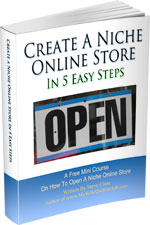
Ready To Get Serious About Starting An Online Business?
If you are really considering starting your own online business, then you have to check out my free mini course on How To Create A Niche Online Store In 5 Easy Steps.
In this 6 day mini course, I reveal the steps that my wife and I took to earn 100 thousand dollars in the span of just a year. Best of all, it's absolutely free!


